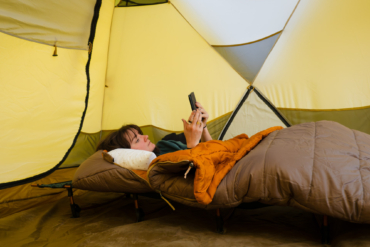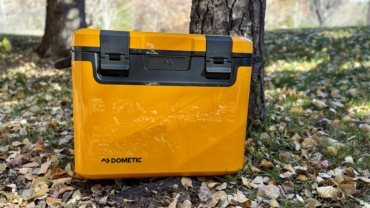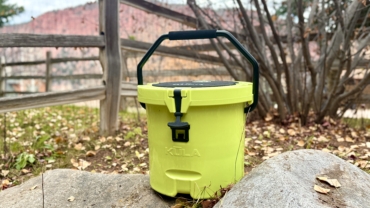A repurposed shipping container serves up a great weekend get-away opportunity for this GearJunkie contributing editor.

I recently pulled out my old expedition sled. Plastered with stickers and dinged up from hoisting it through glacial till it has been around the world in pursuit of big adventure. This time was a little different, though. Still bloated to the gills with food and equipment, the sled was stocked with family supplies for a family winter getaway to a remote Idaho cargo container-come-cabin.
A Cargo Container Cabin Adventure

Cargo containers are large corrugated metal boxes used for shipping. Loaded with goods, stacked and shipped across seas, containers came about during the post-World War II boom, ushering in modern globalization. Today it’s reputed that 17 million containers exist. Surf the inter-webs and you can get yourself a shipping container for as low as $1,200.
Surf a little more and you’ll find examples of purchased containers creatively repurposed as building blocks for livable structures. And, as we found, backcountry cabins. There are lots of pros and cons to building with containers, but this one was already constructed and waiting in the glorious outdoors.
Fat Bike Into Idaho Backcountry
I hitched the sled to the back of my bike and pedaled our supplies three miles into the Idaho backcountry. Rounding the final corner, we spied our winter destination. Jutting out of the woods over the drained reservoir, the container looked like it was speared from over the mountains and lodged in the earth.

Sporting 25 kilometers of fat bike friendly groomed nordic trails, Idaho’s Jug Mountain Ranch has carved out a nice round-the-year niche for active families. For unique digs, the Ranch dragged the corrugated cargo box through the stands of Ponderosa Pines and perched it over the Jug Mountain Reservoir, so close, in fact, that in summer you can swing your legs off the deck and dangle your toes in the water below.
Jug Mountain Ranch Cargo Cabin
We punched in the code and swung open the doors. The 20-foot-long cargo cabin was divided in half; a pair of bunks racked with all-weather mattresses stood behind a roller door, the kitchen and main quarters ran down the right flank. Just a short walk outside led you to the eco-outhouse and the ‘pee’ tree. A shed was stacked with enough wood to keep the cabin warm for two winters.

Inside, the entire cabin was paneled in plywood and fortified with everything one might need for a stay. A propane-powered stove fueled a kitchen stocked with cookware, flatware and cleaning supplies. A small wood stove sat prepped and ready to light. And windows galore cut through the corrugated wall, ready to soak in the light and judicious mountain views.
The kids got right to choosing their preferred bed of choice. Powered by solar, I flipped the Goal Zero battery, illuminating the cabin with a string of holiday lights, then lit the stove to heat up our weekend home.
Idaho Outdoors Recreation
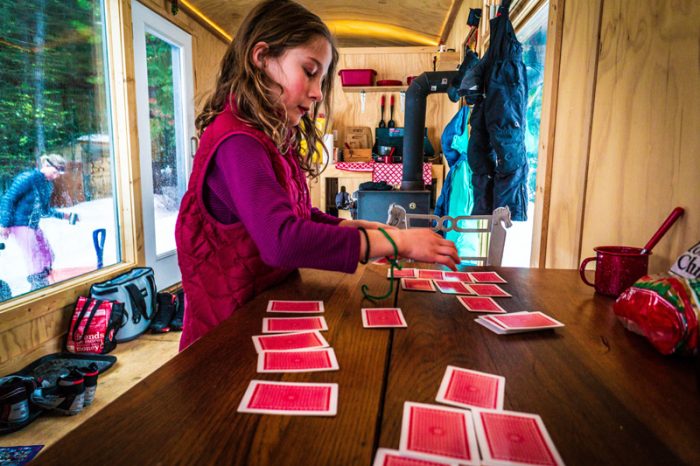
We passed the days skiing, biking, and sledding. We returned late in the afternoon to hang our sweaty-wet clothes out to dry. Our bellies warmed with soup du jour.

We’ve done a fair amount of winter family camping, mostly in yurts though. Yurts, being round, can feel open but dark. Contrary, the cargo cabin, being narrow, felt more constrained, but brighter.
When we wanted to call it an early night for the kids, we simply rolled the divider door shut, allowing mom and dad some quiet time to chill over boxed wine.
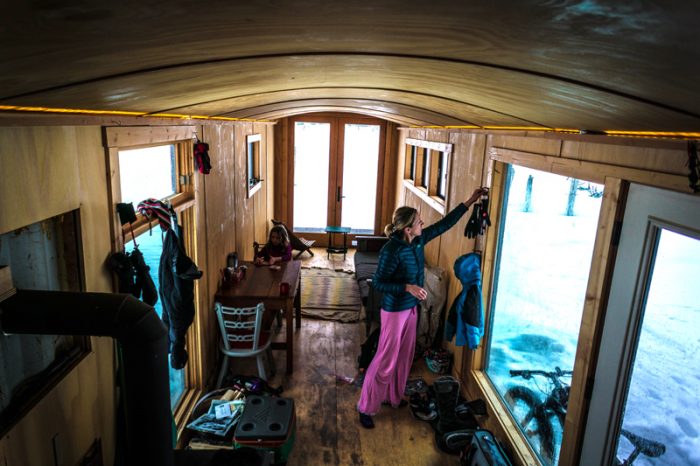
Soon enough, it was time to go. We packed up our gear and racked up the bikes for the ride back to the rig.
Would we come back? Certainly so. Just $100 a night got us a prime outdoor location all to ourselves in a neat little corrugated package. What would we do different? We’d come back in summer of course, so I could finally retire that old bright orange sled.



